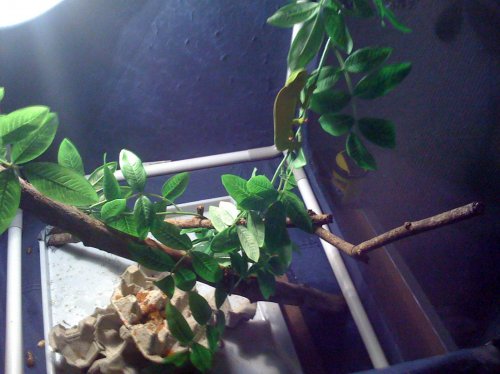Hey guys, I was looking through the web looking for tips, info and feedback from chameleon vets on how to best take care of our new friend Charmander (LOL we named him after the pokemon obviously  ). Hes only a few months old and we are still unsure on what kind he is and whether its a gal or a chum
). Hes only a few months old and we are still unsure on what kind he is and whether its a gal or a chum  . we got a few pics to show everyone but a little guidance would be nice.
. we got a few pics to show everyone but a little guidance would be nice.
PS this is our very first chameleon, hes awsome! We also just joined the community
PS this is our very first chameleon, hes awsome! We also just joined the community
Last edited:
















